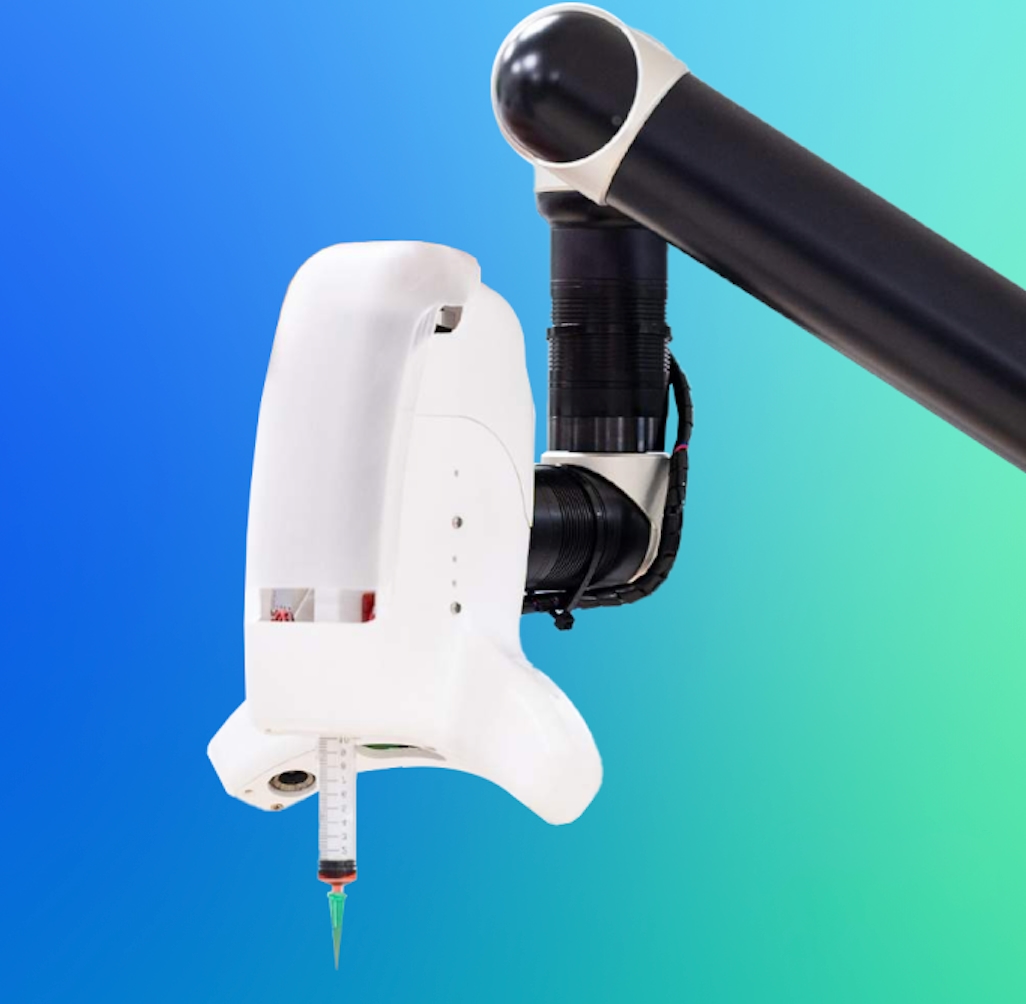Catalog
Search
213 products
View:
- Selected: 1Areas of use
- Selected: 0Item names
- Selected: 0Manufacturer
- Selected: 0Made in
- Selected: 0Additional
View:
213 products
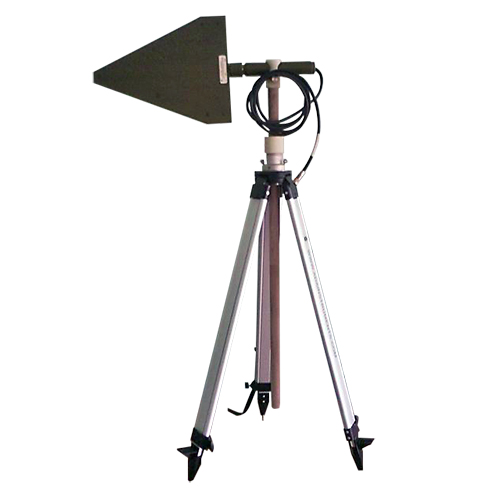
Measuring antenna logoperiodic P6-68
NNPO im. M.V.Frunze
Nizhny Novgorod
Produced in: Nizhny Novgorod
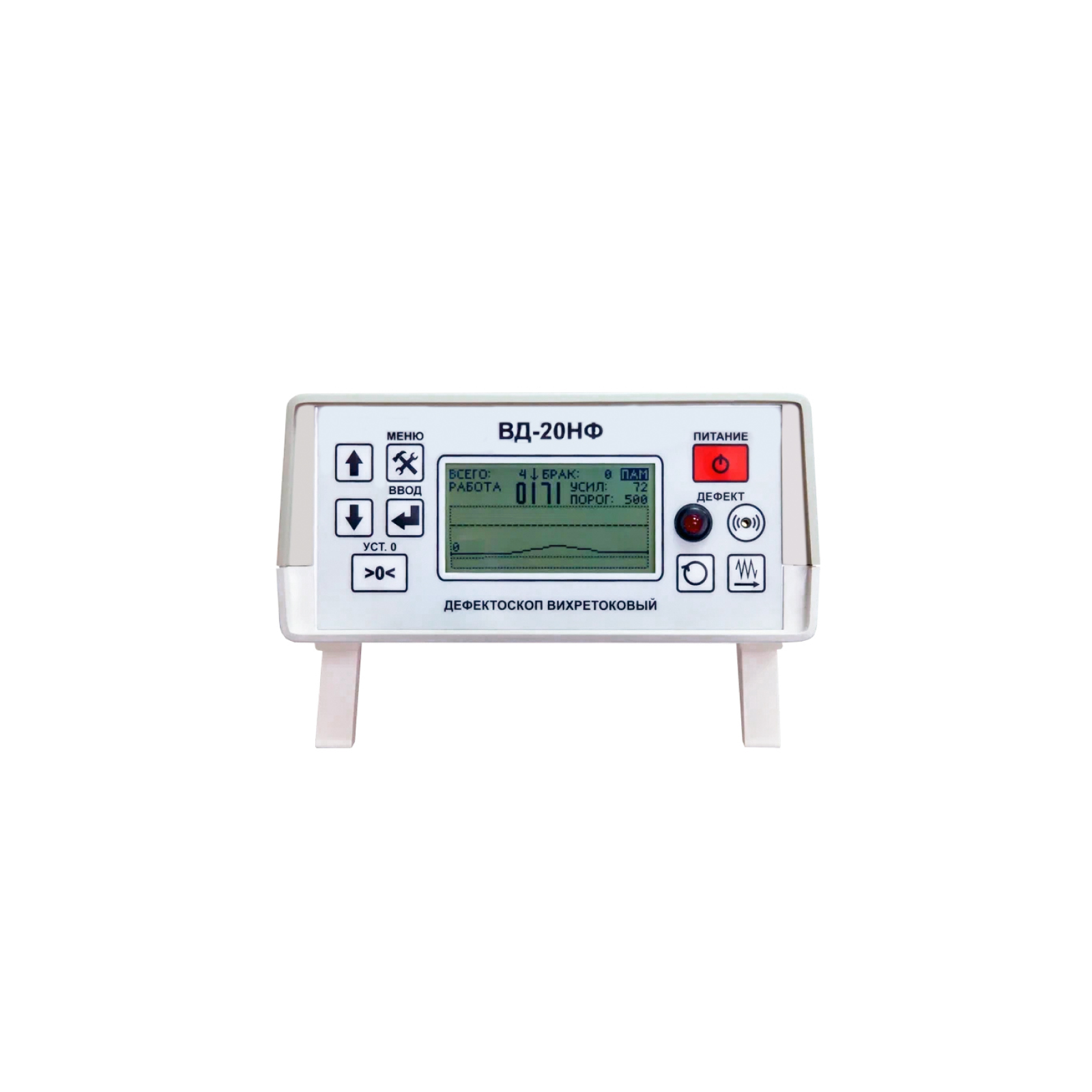
VD-20NF Eddy Current Flaw Detector
The principle of operation of the VD-20NF eddy current flaw detector
The principle of operation of the VD-20NF flaw detector is based on the generation of eddy currents on the surface of the controlled part and subsequent analysis of the signal at the output of the converter, which correlates with the characteristics of the active secondary field.
The device consists of two main blocks: electronic one and electromechanical one, in which an eddy current converter of transformer type is installed. The controlled products (bearing rollers) enter through the input tray into the electromechanical unit of the flaw detector, where they move sequentially and fall under the pressure rollers of the overhead converter holder. The clamping mechanism is adjusted to each size of the rollers, so as to ensure tight contact with the curved surface and fix the tip of the transducer at the required distance from it.
The detection of defects occurs due to the imbalance of the converter when it is located above the surface of the controlled product, caused by the interaction of the primary electromagnetic field generated by the converter with the secondary electromagnetic field of eddy currents induced in the controlled product by the primary field. When cracks are detected, the electronic unit of the flaw detector gives sound and light warning signals, and also triggers the electromagnet of the sorter, which directs the controlled roller into the tray for defective products. In the absence of defects, the controlled roller is directed towards the output tray of the flaw detector.
Design features and advantages
The VD-20NF eddy current flaw detector is equipped with removable input and output trays, power-on switches and a drive for feeding controlled products to the converter, as well as handrails for convenient transportation of the unit.
The mechanisms of the electromechanical unit are protected by a frame made of steel plates. The electronic unit of the flaw detector is portable and can be installed both on the top panel of the electromechanical unit and on the surface of the desktop. Controls and indications of defect detection are located on the front panel of the electronic unit. The delivery package also includes a power adapter for the electronic unit and a tuning sample. The advantages of the VD-20NF flaw detector include:
high reliability (the service life of the flaw detector is more than 10 years);
it is easy to set up and operate;
it has several types of defect detection alarms;
the high probability of detecting defective products (at least 99.9%);
low number of false positives (less than 5%).
Scope of application
According to the current standards of safety and product quality control during repair work in locomotive depots and repair plants, bearing rollers that have passed visual inspection and are recognized as suitable for further operation according to the criteria of geometry and condition of the working surface are subject to mandatory additional control using eddy current flaw detection to detect fatigue cracks invisible during visual inspection on the rolling surface of the rollers. The VD-20NF eddy current flaw detector allows for quality control and automatic disassembly of bearing rollers of various shapes and sizes both in laboratory and factory conditions in full compliance with the requirements of the regulatory documents of Rosstandart and the methods of performing control measurements used in JSC "Russian Railways".
RII MNPO SPEKTR
Moscow
Produced in: Moscow
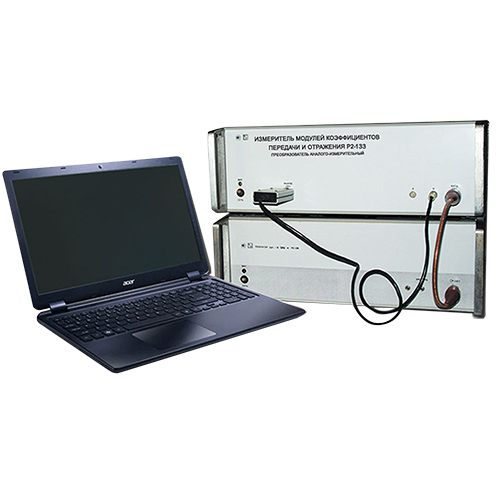
Measuring modules of transmission and reflection coefficients P2-136
NNPO im. M.V.Frunze
Nizhny Novgorod
Produced in: Nizhny Novgorod

P3-34 Electromagnetic field parameter meter
from
37 500 ₽
It is designed for measuring the electromagnetic energy flux density, the average square values of the electric and magnetic field strengths in the continuous generation mode.
NMT-ZASHCHITA
Moscow
Produced in: Moscow

Device for measuring attenuation stepwise D1-25
NNPO im. M.V.Frunze
Nizhny Novgorod
Produced in: Nizhny Novgorod
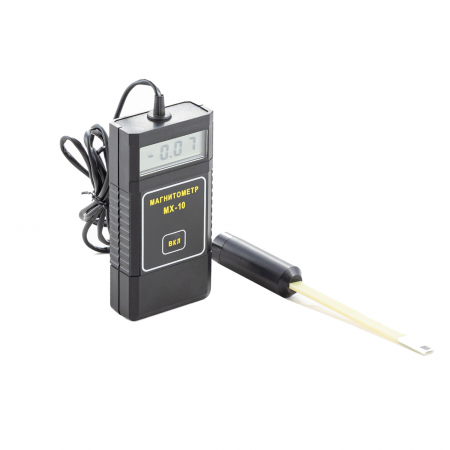
MX-10 Magnetometer
from
80 400 ₽
The MX-10 magnetometer is an auxiliary tool for conducting magnetic powder control using permanent magnets, rectified current electromagnets by the applied field method, as well as for monitoring by the residual magnetization method according to the requirements of the current regulatory documentation.
The MX-10 magnetometer meets the requirements in the field of non-destructive testing for the main industries: nuclear, energy, oil and gas complex, general and special engineering, railway transport, aerospace industry, elevator and crane facilities, etc.
Magnetometer MX-10 is an electronic measuring unit with a remote measuring converter, which is based on the Hall effect. The design of the device allows measuring both the normal and tangential component of the magnetic induction vector directly on the surface of the part. The measured value of the magnetic field induction value is displayed on the digital indicator of the electronic unit.
Features and Benefits
The updated version of the MX-10 magnetometer has a modern element base, which has significantly improved its performance, reduced error and expanded the measurement range (see the Table of Technical characteristics).
The device is capable of operating in two modes:
Constant measurement mode. This is convenient when carrying out a large number of measurements over a short period of time.
Automatic shutdown mode 1 minute after measurement. It allows you to save the charge of the device, which is especially important in the field.
A thermal compensation circuit ensures stable measurement readings at any temperature change.
Other features include:
The small dimensions of the Hall measuring transducer for the MX-10 magnetometer make it possible to measure the induction of the magnetic field in grooves, grooves, angular transitions, i.e. in those areas of the controlled product that are stress concentrators and are most dangerous from the point of view of cracking;
A wide range of measurements of the magnitude of the magnetic field induction;
The smallest measurement error among analogues in the entire operating temperature range;
Convenience of measurement by a remote measuring transducer in various planes;
Low power consumption and, as a result, long working time;
Low cost compared to similar models on the market;
Compact dimensions;
Manufacturer's warranty – 12 months;
The device is included in the state register of measuring instrument RU.C.27.004.A No. 36079 dated 01.09.2009 and has undergone a verification procedure. Magnetometer MX-10 (milliteslameter) it is also included in the register of measuring instruments, test equipment and measurement methods used in JSC "Russian Railways".
Scope of application
1. Verification of the magnetization modes of controlled parts using permanent magnets, rectified current electromagnets by the applied field method, as well as during the control by the residual magnetization method, by measuring the tangential and normal components of the magnetic field strength vector at one or more points on the surface of these parts. The number of points at which the magnetic field strength is measured and their location on the controlled surface depend on the shape of the part, as well as on the type and design of the magnetizing device used.
2. Control of the magnetization of parts before welding. During electric arc welding of non-magnetized parts, the effect of "magnetic blowing" is observed, i.e. the deviation of the electric arc from the axis of the electrode, the wandering of the arc end along the product, which leads to metal splashing during welding, deterioration of the seam quality. Therefore, before welding, it is necessary to measure the level and direction of magnetization of the parts and demagnetize them if necessary.
3. Verification of the residual magnetization after magnetic powder inspection. Demagnetization and verification of the residual magnetization of responsible, rubbing parts, as well as parts in contact with them after assembly, is prescribed in the requirements of the IPC and is a technological stage of control.
4. Magnetization control before assembling various structures. Magnetized parts can affect the operation of automation devices, cause errors in the readings of instruments, equipment. Magnetization can cause the accumulation of wear products in the movable joints, cause a negative effect on subsequent technological operations. Due to possible undesirable consequences, the parts are demagnetized and the quality of their demagnetization is checked.
5. Control of gas and water meters. Housing and utilities enterprises may also be interested in the device. It is known that existing gas or water flow meters can be easily "deceived" with the help of strong permanent magnets that reduce the rotation speed of the flow sensors. There are different ways to detect such theft. One of them is the control of the residual magnetization of the counters using magnetometers. The measured value should not significantly exceed the Earth's magnetic field, otherwise it can be concluded that there was unauthorized interference with the operation of the device.
Main technical characteristics
Measuring range, MT from 0.1 to 100
The limits of the permissible basic absolute measurement error, MT D = 0.02 VI + 0.05,
where VI is the magnetometer readings in MT
Power supply battery type: PP3 (nine-volt battery)
Consumption current, mA, no more than 15
Duration of continuous operation
(from fully charged batteries), h, at least 20
Overall dimensions, mm:
– electronic unit (LxWxH) 120x60x25
– Measuring transducer (Diameter x Length) 18x173
Weight, g, not more than 160
Ambient operating temperature, °C -10...+40
RII MNPO SPEKTR
Moscow
Produced in: Moscow
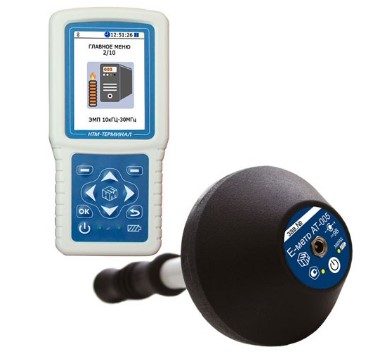
E-meter AT-005 Electric Field Parameter meter
from
40 500 ₽
Designed for measuring the average square values of the electric field strength in the frequency range from 10 kHz to 30 MHz in continuous generation mode.
NMT-ZASHCHITA
Moscow
Produced in: Moscow
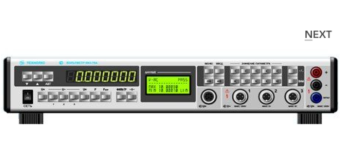
AC voltage voltmeter VK3-78A
The voltmeter is capable of working both independently and as part of automated measuring systems with interfaces such as USB, RS-232, IEEE-488 (CPC).
Technical specifications
Measuring ranges of electrical quantities:
- constant electrical voltage from 3 MV to 1000 V
- SCR of alternating electric voltage in the frequency range from 10 Hz to 1 MHz (AC) from 10 MV to 1000 V
- RF RF AC voltage in the frequency range from 10 Hz to 2000 MHz (RF) from 10 mV to 100 V
- frequency of the measured AC voltage from 10 Hz to 1 MHz
Measurement errors of electrical quantities:
- constant electrical voltage ± (0.0021 - 17)%
- SCR of alternating electric voltage in the frequency range from 10 Hz to 10 MHz (AC) ± (0.017 - 21)%
- RF RF AC voltage in the frequency range from 10 Hz to 2000 MHz (RF) ± (0.21 - 16)%
- frequency of the measured alternating electric voltage ± (0.1 -10.1)%
General characteristics:
Operating temperature range from 5 to 40 °C
AC power supply 220 V, 50 Hz
Power consumption, no more than 50 VA
Overall dimensions, mm 489x91x381
Weight, not more than 8.5 kg
TEKHNOYAKS
Moscow
Produced in: Moscow
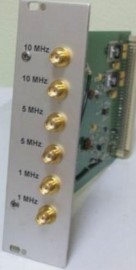
Amplifier module MUS-04
The module uses connectors of the SMA type. At the request of the customer, any combination of output signals is possible. When installing two amplifier modules in the above devices, the total number of output signals increases to twelve.
Ruknar
Nizhny Novgorod
Produced in: Nizhny Novgorod
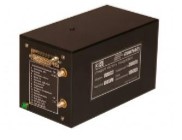
Rubidium frequency standard H1-1014
The built-in time scale shaper provides a pulse signal of 1 c at the output of the device.
Its small dimensions, weight, power consumption, and operating time allow it to be widely used as an embedded source of high-stability signals in frequency measuring devices and complexes, telecommunications systems, navigation and communication systems.
It includes a frequency binding module based on a pulse signal of 1 s from an external time scale or from a SRNS GLONASS/GPS receiver and a tunable frequency synthesizer with the ability to adjust the frequency via the RS-232 interface.
The built-in binding module allows the device to be used when operating in automatic correction mode as a source of a highly stable signal with a frequency error of ± 5 · 10-12 per day.
Ruknar
Nizhny Novgorod
Produced in: Nizhny Novgorod
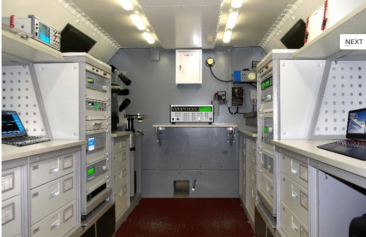
Mobile laboratory of measuring equipment PLIT-A2-4/1M
The complex is equipped with air conditioning, heating and ventilation systems to create and maintain a preset temperature level (20 ...25) ° C in the van body, at an outdoor temperature from minus 40 ° C to 40 ° C.
PLIT-A2-4/1M is equipped with a removable diesel electric unit with a capacity of 16 kW, which ensures the functioning of all systems in autonomous mode.
A set of functionally related working standards, special equipment and automation tools allows you to implement comprehensive metrological maintenance of measuring instruments at workplaces
TEKHNOYAKS
Moscow
Produced in: Moscow
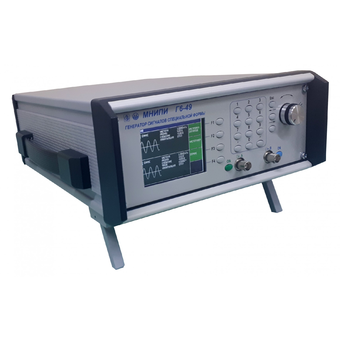
Signal generator of a special form G6-49
General characteristics:
USB 2.0 interface, SCPI support
Power supply ~ 230 V, 35 V*A
Operating temperature range from minus 10 C to + 40 C
Dimensions; weight 325×270×125× mm; 4 kg
MNIPI
Minsk
Produced in: Belarus, Minsk
